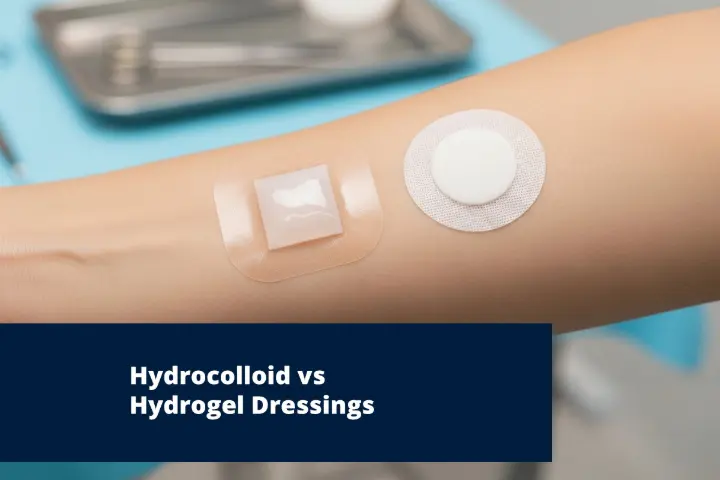
Buyer’s Guide: Hydrocolloid vs Hydrogel Dressings
On paper,the differences between hydrocolloid vs hydrogel dressings appear to be a simple comparison: different materials for different wounds.
The clinical distinctions aside, there’s also the nuance that goes into making the right choice for your teams and patients - ordering the best quality dressings in the right quantities. Balancing budget, efficacy, inventory turnover, and working with different suppliers are all part of the equation.
Use Cases For Hydrocolloid and Hydrogel Dressings
Hydrocolloid dressings are occlusive. They seal a barrier between the wound and bacteria or excess moisture. Hydrocolloid dressings contain gel-forming agents such as pectin, that interact with wound exudate to form a soft gel, maintaining a moist environment. They’re best for wounds with minimal to moderate drainage, such as pressure ulcers in stage II or shallow wounds that need protection while they heal.
Hydrogel dressings are different. They're water-based, cooling, and more delicate in texture. Clinicians often use them for dry or necrotic wounds, radiation burns, or even infected sites (when paired appropriately). Unlike hydrocolloids, they don’t form a seal but instead focus on donating moisture. So, if the wound is dry and the surrounding tissue is at risk of cracking or breaking down, hydrogel is an effective choice for treatment.
Despite clear clinical differences and use cases, people occasionally use hydrocolloid and hydrogel interchangeably as if they're the same thing even though they’re not. Knowing when to use a hydrocolloid or hydrogel dressing isn’t just about wound characteristics; it can also depend on clinician preference or facility protocols.
Why These Details Matter
Those responsible for sourcing hospital medical supplies know the distinctions between hydrocolloid and hydrogel dressings matter, not just from a patient care standpoint, but from a utilization and cost-efficiency perspective, too.
Hydrocolloids, being occlusive, can stay on for several days, sometimes up to a week if the wound’s behaving and there's no leakage. That longevity can reduce dressing change frequency, which, depending on staffing ratios and caseloads, makes a real difference.
Hydrogels, on the other hand, typically need more frequent changes. They're often more expensive per unit and not as durable. But for burns, graft sites, or any wound where tissue needs gentle hydration and protection from desiccation, they’re worth it.
Basically, it comes down to matching the right tool with the right job. Easier said than done when you're comparing different brands with slightly different marketing languages and it's hard to distinguish which fits your hospital's needs better. This is where working with the right supplier becomes invaluable.
Supporting Smart Selection with MAP Medical
MAP Medical offers wound care solutions that reflect real-world needs. From wound cleansers to packing strips and everything in between, our catalog is designed to support healing from the inside out.MAP's wound care line includes:
- Wound cleansers that ensure wounds are properly prepared - especially critical before applying hydrocolloid or hydrogel dressings.
- Dressings tailored for different wound types, whether you need a moisture-donating hydrogel or a moisture-retentive hydrocolloid.
- Packing strips for tunneling wounds that need structured filling to heal effectively.
When it comes to hydrocolloid vs hydrogel dressing purchasing decisions, the key is understanding what each dressing does best, aligning that with patient needs, and making selections that won’t come back to haunt you with excessive returns.
You're balancing care outcomes with operational efficiency. That’s not easy. But having a supplier who can help you distinguish between two deceptively similar products makes all the difference.
About MAP Medical
MAP Medical helps procurement teams find the supplies they need even when other distributors don’t have access to stock or can’t source hard to find items. With a product catalog featuring over 500,000 products from 3,000 manufacturers, MAP Medical supplies hospitals, acute care facilities, and educational & research labs with high quality products to match their exact requirements and budgets. Fast dispatch and delivery times, along with excellent customer service ensures the medical supply chain runs smoothly without interruption.
MAP Medical is more than just a supplier - we work as a strategic partner to enable every client that works with us to make tangible improvements in cost and time efficiencies. To find out more about how MAP Medical can help you, get in touch with our team today.


Buyer’s Guide: Hydrocolloid vs Hydrogel Dressings